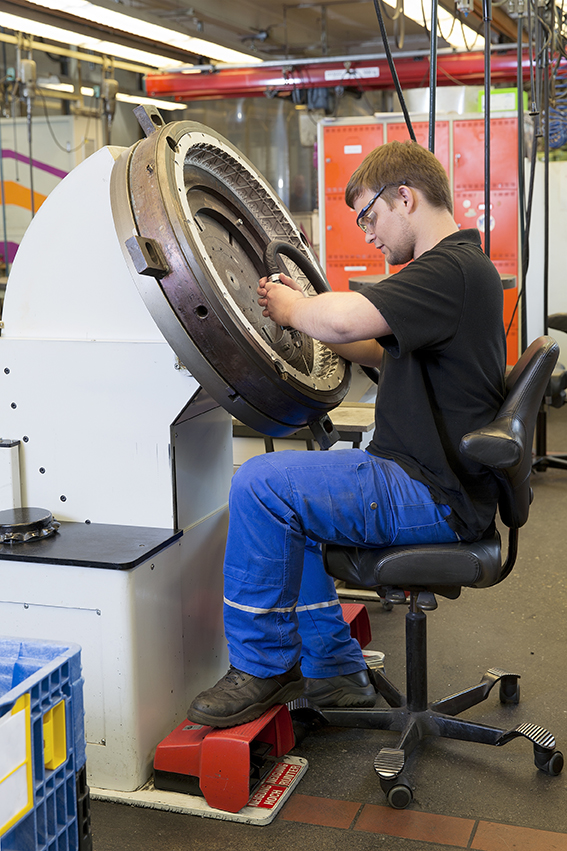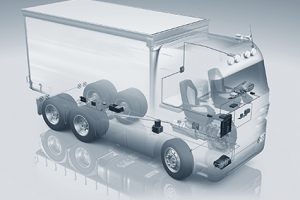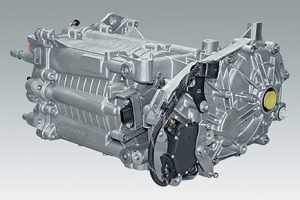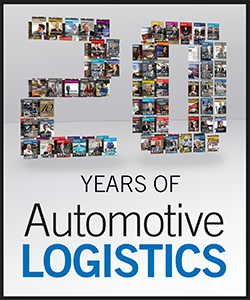 Continental can trace its roots in the transport sector back to 1871, with the founding of a rubber products factory in Hanover, Germany. Among the original products of the Continental Caoutchouc und Gutta Percha Compagnie were solid rubber tyres for carriages and bicycles. By 1892, the company had expanded into the production of pneumatic bicycle tyres (a sector in which it continues to enjoy a strong presence). Automobile tyre production commenced in 1898.
Continental can trace its roots in the transport sector back to 1871, with the founding of a rubber products factory in Hanover, Germany. Among the original products of the Continental Caoutchouc und Gutta Percha Compagnie were solid rubber tyres for carriages and bicycles. By 1892, the company had expanded into the production of pneumatic bicycle tyres (a sector in which it continues to enjoy a strong presence). Automobile tyre production commenced in 1898.
Still based in Hanover, Continental is now the world’s fourth largest automotive tyre manufacturer, with production facilities around the world. In recent years, however, it has extended its portfolio into a wide range of other component categories. Much of that expansion has come through acquisition. Continental bought the automotive electronics business of US-based Motorola in 2006, for example, and its $16.7 billion purchase of Siemens’ VDO automotive unit in 2007 was, at the time, the largest acquisition in the automotive supply sector. Today, the company is the fifth biggest global automotive supplier.
Continental is divided into five main divisions. Its Rubber Group includes the Tire Division and ContiTech, which makes airsprings, conveyor belts and a range of other specialist products. The company’s Automotive Group includes the remaining three divisions: Chassis and Safety, Interior and Powertrain, for which Juergen Braunstetter has been head of supply chain management for almost six years, having previously been head of purchasing, supplier quality management and logistics for another automotive supplier.
Braunstetter is responsible for a supply chain operation of considerable scale: annual sales for Continental’s three automotive divisions are around €32 billion ($38.5 billion); and the business delivers around 5m parts a day, shipping to approximately 12,900 different locations around the world.
Besides the challenges of dealing with growth and scale in its operations, Braunstetter suggests that one major change in the automotive supply industry over the past few decades has coincided with the introduction of large-scale enterprise resource planning (ERP) systems such as SAP. Those systems, he says, allowed suppliers to take an end-to-end perspective on their logistics activities for the first time. Rather than splitting responsibility for logistics between their purchasing, sales and operations or production control departments, automotive suppliers began to establish dedicated logistics and supply chain management departments. Those departments, he says, have had “increasing responsibility year by year”.“Today, these guys are in charge of customer call-offs, production controlling and steering, and for ordering material from our suppliers. They control the whole material flow through the company,” he notes.
That level of integration was inspired by the desire to find a better way to coordinate sales, purchasing and production activities, Braunstetter adds, but its importance was emphasised by growing pressure for suppliers to manage their working capital effectively. “From around 2009 to 2011, we had market challenges and working capital would rise and fall significantly. Suppliers realised that no-one in their organisations had responsibility for managing those changes.”
 Continental's production and supply chain has been transformed by enterprise resource planning systems such as SAP, which link production, supply and logistics processes
Continental's production and supply chain has been transformed by enterprise resource planning systems such as SAP, which link production, supply and logistics processesGrowth and globalisationSuppliers in general, and Continental in particular, have done a good job learning to manage inventory levels and working capital through market fluctuations, says Braunstetter, but logistics challenges continue to grow. “Managing material flows is now much more complicated and challenging than five years ago,” he states. “At Continental, we’ve enjoyed nicely increasing sales, but that brings with it the requirement to manage many more part numbers, for both finished goods and purchased parts, and to manage a lot of different plants. That means we need to make a lot of effort to maintain our basic data. We have to ensure that our demand data from the customer side are as reliable as possible.”
Getting reliable demand data from customers isn’t always easy, he adds, especially when those customers are young companies operating in fast-growing and volatile markets, like much of Asia. While Continental will use demand forecasts generated by its mature and well-established customers directly in its own supply chain planning, it creates its own independent forecasts for some of its newer customers.
The complexity of supplying customers in booming Asian markets is compounded by long lead times, especially if parts must be shipped from Europe. Over the past five years, says Braunstetter, Continental has worked hard to reduce such long-distance supply chains. “We like to produce in the market, for the market, wherever we can,” he says. “If we are not able to do this, we establish our own warehouse close to the customer where all the material from across the world is held, ready for delivery.”
Challenges are increasing on the inbound side as well. “We use a lot of electronic parts in our products, like microcontrollers used in cockpits, radio steering modules or powertrain,” says Braunstetter. “Electronics suppliers are not like the suppliers we use for mechanical parts. They need a forecast for no less than three or six months. That means you have to take your planning very seriously and use all the experience you have around the world to come to the right figure.”
All that work has to take place before the customer sends Continental its call-offs for parts, says Braunstetter, but if it does its homework effectively, more than 95% of shipments to customers run smoothly and according to plan. What matters next is how effectively the organisation deals with the 5-6% of orders that can’t be handled through its normal processes.
[mpu_ad]“We have people who are specially trained to handle emergency cases,” explains Braunstetter. “We have three levels of emergency. The first level is where we see risk. For example, today we know that [Hurricane Harvey is affecting the US. So first we bring all our potentially affected plants together and we see which deliveries might be affected by those risks. In parallel, our purchasing guys will contact all the suppliers in the affected area and find out if those suppliers will be able to fulfil their delivery commitments. In the next step, we start our allocation process. We bring our people together and we establish the volumes we have in demand from our customer, and the material we have in stock or in production. Then we leverage all the available plants and inventory to deliver the required volume to the customer on time.”
If a severe disruption in the supply chain means Continental will be unable to meet its commitments to the customer, the final step, says Braunstetter – which requires his personal decision – is the establishment of a special ‘war room’. “We establish a specific war room for each customer, and we will talk to the customer, to understand how much inventory they have in stock and to see if they can reduce their demand.”
 "Electronics suppliers need a forecast for no less than three or six months. That means you have to take your planning very seriously and use all the experience you have around the world to come to the right figure" - Juergen Braunstetter, Continental
"Electronics suppliers need a forecast for no less than three or six months. That means you have to take your planning very seriously and use all the experience you have around the world to come to the right figure" - Juergen Braunstetter, Continental
By achieving complete transparency through the entire supply chain in this way, Continental can work with its customers to reach the best resolution to the issue.
Such situations are rare, Braunstetter emphasises, but Continental’s ability to manage them effectively is important for its customers. “It’s the thing everyone wants to talk about,” he notes, wryly. “No one is interested in the 95% that is normal business; everyone wants to know about what happens when things go wrong.”
Reducing the incidence of such ‘firefighting’ events is a priority for the organisation and one in which Braunstetter says technology has much to offer. “I’m convinced that advances in data transparency and analytics will allow us to reduce that last 4-5% to 1%,” he says.
 Continental's 'Fast Forward 2030' is exploring how changes in technology and market conditions will impact the company, including in the supply chain
Continental's 'Fast Forward 2030' is exploring how changes in technology and market conditions will impact the company, including in the supply chainCapabilities a priorityTo keep the overwhelming majority of its logistics operations running smoothly and efficiently, Continental relies on the skills and capabilities of logistics and supply chain personnel across its worldwide operations. Continental Automotive has developed a sizeable in-house training and personnel development capability – the SCM Academy – that offers 500 different training modules for supply chain and logistics staff.“Last year, we trained 6,300 people on supply chain topics, using our own trainers,” says Braunstetter. The SCM Academy, he adds, helps Continental to communicate standards and good practices to logistics staff, giving them the capabilities they need to deal with different processes and systems.
It isn’t just Continental that is continually striving to improve its supply chain processes. Its customers are doing so too, and those efforts have knock-on implications for their suppliers. “Our most mature customers are asking for ever more transparency. They don’t just want to know when we will hand over the material to them, they also want information on our production plans and how much critical raw material we have in our warehouse. Our customers are making risk calculations based on geolocation data and critical supplier and sub-supplier locations. Increasingly they want us to provide information on our sub-supplier locations too.”
Ready for the next stepUnder a strategy it calls ‘Fast Forward 2030’, Continental has engaged in a number of projects designed to prepare it for changes in technology and market conditions over the next 15 years. In SCM, says Braunstetter, this effort has two main components.
“The first is ‘digital flow and artificial intelligence’. We are sure that big data and advanced analytics technologies will allow us to get faster access to the right intelligence. We have run pilots and we have seen how we can get much more information out of the available data – not just our internal data, but also other sources like information on the internet about the actions of customers and other suppliers. That’s helping us to become much more accurate with our planning.”
 "We have three levels of emergency. The first is where we see risk... In the next step, we start our allocation process... Then we leverage all the available plants and inventory to deliver the required volume to the customer on time" - Juergen Braunstetter, Continental
"We have three levels of emergency. The first is where we see risk... In the next step, we start our allocation process... Then we leverage all the available plants and inventory to deliver the required volume to the customer on time" - Juergen Braunstetter, Continental
Braunstetter ultimately predicts a supply chain management capability that works like Amazon’s Alexa digital assistant. “It is a long way off, but eventually I would be able to ask our system ‘how are we doing today? Are there any problems? Which customers and which shipments might have problems?’ And then we get the information back immediately.”
The second big change, called ‘Industry 4.0 in Supply Chain Management and Logistics’, he says, will affect the physical material flows.
“Cobots and AGVs [automated guided vehicles] are already much cheaper today than they were two or three years ago. It is now possible to automate the flow of material inside our plants to a much higher degree.”
Continental is already exploring the possibilities of such automation at many plants, he adds. “The world is changing, but we are prepared with our ‘Fast Forward 2030’ strategy in supply chain management. Our goal is a customer- and value-oriented autonomous supply network with zero incidents and real-time information everywhere.”


























![Global[1]](https://d3n5uof8vony13.cloudfront.net/Pictures/web/a/d/s/global1_726550.svgz)











